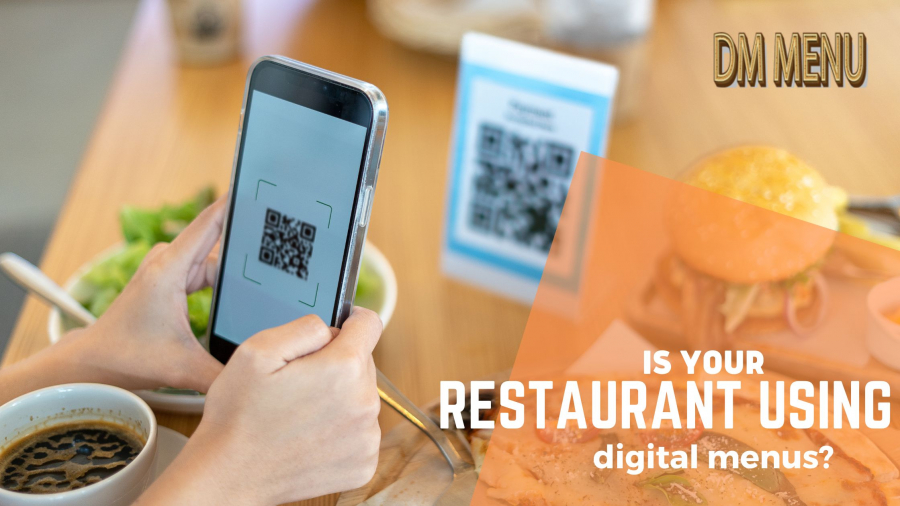What Exactly is Digital Menu
Restaurant technology is influencing how customers order food. Digital menu ordering is a newer method of displaying restaurant menus. Digital menus enable the restaurant industry to save time, streamline operations, and simplify processes for wait staff.
New restaurant technology has numerous advantages. But first, let's define what a digital menu ordering system is.
What Exactly Is A Digital Menu?
Mega restaurant menu Contactless menus are available to restaurant customers by scanning a QR code. They enable digital menu ordering, whether for pick-up or delivery (learn more: what is a QR code).
With digital restaurant menus, physical restaurant menus are no longer required. They also provide significant benefits to the restaurant industry. Let's look at five digital menu ordering tips, from increasing profits to increasing customer satisfaction.
1. Reliable and timely service
If it's a busy shift, restaurant servers can cause delays. Customers will receive their food on time if digital menu ordering reduces their number of tasks.
When customers use a digital menu ordering system to choose their food, the order is routed directly to the kitchen. When the sous chef and other kitchen staff have digital orders to refer to, there is little room for error.
Customers will have a positive experience if incorrect orders are avoided, and the restaurant owner will save money. Restaurant overhead expenses are high, so you want to avoid remaking dishes.
When it comes to ordering food, consumers look for accuracy and speed. In fact, because of the use of a touchscreen menu ordering system, kiosks have proven to be successful self-service options. QR codes, on the other hand, are most effective in sit-down restaurants.
2. Contactless Payments and Menus
Contactless menus and payment options aid in meeting health and safety regulations. They also improve the casual dining experience for customers. Instead of waiting for menus, customers can use their phones to scan a code and begin browsing the menu.
It's even more convenient than a touch-screen menu ordering system and works with all smartphone models. Furthermore, it is a more secure option for both customers and servers.
Since the peak of the COVID-19 pandemic, restaurant owners have been on the lookout for ways to make their establishments safer. Menus circulate between customers and staff more than one might think in a busy restaurant. This allows germs and viral bacteria to spread and raises the risk of cross-contamination between tables.
Whether customers are trying to avoid getting sick or have a severe allergy to a specific ingredient, the less contact they have with menus, the better.
BinWise beverage inventory management platform CTA3: Edit Menus From Anywhere, At Any Time
Have you ever noticed a typo on a menu or come up with a fun drink recipe but couldn't find a quick way to add it? Restaurant managers can change the menu at any time with a digital menu ordering system.
Another scenario in which this technology comes in handy is when a restaurant is extremely busy, and the kitchen runs out of specific ingredients. Instead of informing customers that they will be unable to serve their favorite dish, they can simply log into the software and remove it.
Menu changes on a regular basis will keep your restaurant from becoming stagnant. However, if your menu is so extensive that some ingredients go to waste, removing them will be a breeze with a digital menu ordering platform.
Using a restaurant inventory management system, you can take accurate inventory to determine which menu items to keep or remove. This will not only save you money on restaurant bills, but it will also help organize your kitchen storage. In the meantime, keep track of your inventory with an inventory spreadsheet.
4. Food Delivery App Integration
Because digital menus are easily editable, they can work in tandem with food delivery apps. Make sure your in-person and online menus are identical, or you'll cause confusion about what's available.
Improve mobile food ordering processes by making it clear that customers can get restaurant menu items from anywhere in the vicinity. Because an online ordering platform is critical for increasing profits, make sure that each menu includes current offerings.
Customers may be disappointed if they want a dish they ordered online but do not find it at your restaurant. Change every digital menu ordering platform whenever there is a change.
5. Orders for Upsells
Digital menu ordering can be personalized. Set up proper integrations to increase cart values.
Configure the digital menu ordering systems so that suggestions appear on the checkout page when people add items to their cart. A digital platform is a way to up-sell orders, whether it's items from the appetizer menu to pair with entree food or popular drink specials during happy hour.
When people go out to eat, there's a good chance they either know what they want or have a good idea. In these cases, they skip right to a specific menu section and don't look at the rest.
Viewing unique menu items will become inevitable as suggestions are added to the digital menu ordering system. Furthermore, it allows customers to try new things. With frequent menu updates, digital menu ordering platforms enable bars and restaurants to keep up with food trends.
6. Flexible Payment Options
If your digital menu ordering system works with pay-at-table devices, people will have payment options. Giving customers a choice in payment methods, from credit cards to mobile payments, will help to simplify payment processes.
Offering a variety of payment methods allows your restaurant to be inclusive while allowing you to accept any transaction. Whether or not a restaurant accepts a specific payment method can either deter or attract customers.




